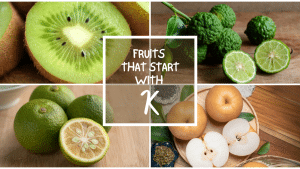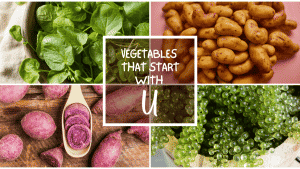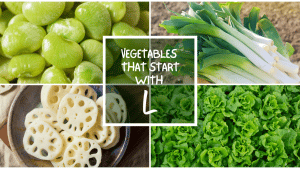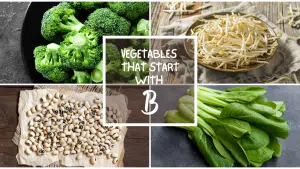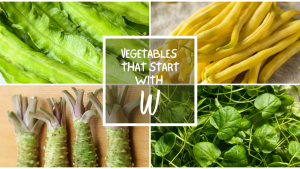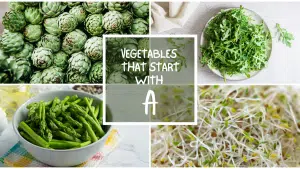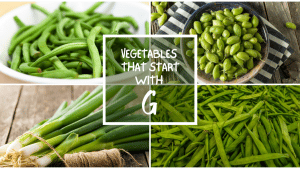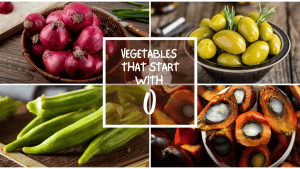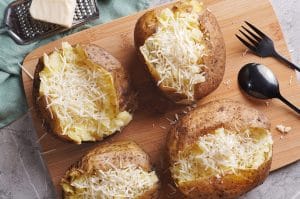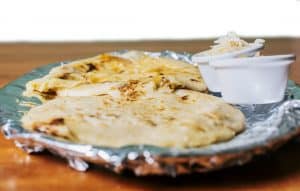All The Vegetables That Start with K
Important Note: When you buy through our links, we may earn a commission. As an Amazon Associate we earn from qualifying purchases. Content, pricing, offers and availability are subject to change at any time - more info.
Vegetables are a staple of the human diet. They are a significant dietary source of nutrients and contain a vast amount of water content. Vegetables are nutrient-dense foods rich in vitamins, minerals, and antioxidants. The body requires all of these nutrients, so simply eating vegetables can help improve one’s health. There are a few that should be consumed frequently in order to keep your diet balanced and provide adequate nutrition. This article is a comprehensive list of all vegetables that begin in the alphabet with K. Keep reading to learn all about these wonderful foods!
Kale

It’s a type of leaf that is often eaten raw. Kale is green or purple leaves that are curly. When they are cooked, the edges of the leaves become dark. They have serrated edges and a tough texture on them. Its scientific name is Brassica oleracea Acephala. They can be found in most countries around the world. They are often found growing in colder climates. It is very flavorful. It’s kind of a bitter taste, but it’s perfectly paired with other strong flavors. It has a strong scent. The scent is bitter and earthy. Even though it’s not a bad smell, It’s still very strong.
It is commonly used with scrambled eggs and even bacon. It’s also common in soups such as puréed kale soup. It can also be mixed into oatmeal or broccoli soup for added flavor and nutrients such as calcium and vitamin A. It is also often used in salads because of its strong flavor. It is rich in vitamins A, C, and E. It contains beta-carotene, which helps the body’s immune system and protects against heart disease. Because of the crow’s feet on Kale, it has become known as nature’s wrinkler. It also contributes to the benefits of a healthy heart.
You can find the study on the health benefits of Kale here. Chopping up Kale will help remove some of that bitterness from the taste buds. Yes, it’s very easy to buy. You can find Kale in most farmer’s markets and health food stores in the USA. Many grocery stores stock it as well. Just be sure that you are getting your Kale fresh as it will often get moldy if you store it in the back of the refrigerator too long. You could also try growing your own Kale at home. Just make sure that your growing conditions are healthy and warm.
Kohlrabi
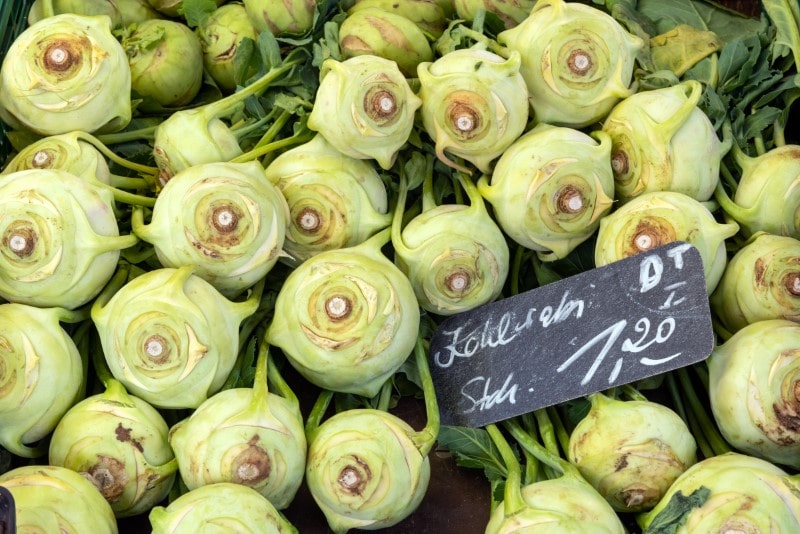
Kohlrabi is a vegetable that’s tubular in shape, and it has a bulbous appearance. It has a light green color with purple stems. This vegetable is often eaten raw or cooked, but raw kohlrabi tastes very bitter. Its scientific name is Brassica oleracea Gongylodes.
It can be found in most countries in the world. It can grow to be as large as 0.7 to 1.5 meters. It’s usually harvested in October. In the winter season, the russet kohlrabi is harvested and sold to be used in the fresh market or canning industry, as well as it is eaten raw, cooked, or juiced. Its flavor is unique. It tastes very similar to cucumber, with a hint of bitterness in it and a slight sourness, too, that gives it a nutty taste on the tongue. It has a strong scent to it. It has a taste that is hard to explain, but the strongest flavor of kohlrabi is like a cross between a cucumber and a cabbage. It’s very fresh, smelling, and fragrant. Even though you can’t exactly pinpoint it, all of the flavors are very distinct. It is commonly served with beef or pork dishes. It can also be used in salads, juice, and stir-fry, and it can even be used as a substitute for potato chips. It has a crunch that can’t be beaten, and it is one of the strongest vegetables for detoxification. It is rich in vitamin C and folate. It also contains beta-carotene, which helps the body’s immune system and protects against heart disease. Because of its crunchiness, it has become known as nature’s cracker. It is also a great source of fiber, which helps with digestive health.
You can find a study on the health benefits of Kohlrabi here. It is a wonderful vegetable to have on hand during the fall season because it can help relieve cold and flu symptoms. It is usually found at farmer’s markets and grocery stores in the USA.
Komatsuna
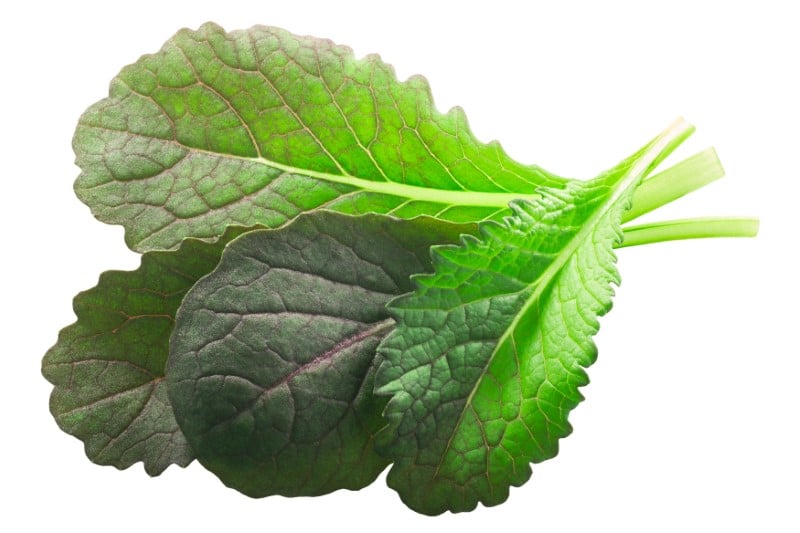
Komatsuna is a type of Japanese leaf vegetable. It is native to Japan and is commonly known as the Japanese Spring Onion in the United States. It is mentioned as one of 100 Japanese Dishes You Must Try Before You Die. There are two varieties of Komatsuna grown in Japan: Large leaf komatsuna and small leaf komatsuna. It is a very interesting vegetable because it resembles mustard greens but is not mustard greens. It has a stronger flavor than turnip greens and mustard greens. The leaves of this vegetable have a mild, sweet, and spicy taste to them, with the texture being tender.
It belongs to the Brassicaceae family of vegetables, along with radishes. The seeds are green or brown in color. The leaves are long and thin and have an onion-like taste to them with a crunchy texture to them. It looks a lot like spinach. The leaves are long, narrow, and light green in color. It is also known as Brassica rapa or Gai Choy. It’s scientific name is Brassica rapa var. perviridis. It can be found in many different countries of the world, including the United States and Japan. This vegetable can grow to be about 2 feet high or less, depending on the growing conditions it is subjected to and how much watering it gets on a daily basis. When you take a whiff of Komatsuna, the first thing you notice is a strong aroma. It has a sweet and spicy scent to it and an onion aroma to it. It can easily be mistaken for the bamboo shoot or rhubarb. As with any vegetable, you can use it in a variety of ways and create some great recipes that utilize Komatsuna. It can range from raw to cooked, so there are many possibilities for how to use this vegetable. It is a great addition to soups, stews, and salads. It is also mixed with other vegetables such as Chinese cabbage, cabbage, or spinach for a healthy mix of flavors. It can also be added to sandwiches, as well as burgers, tacos, etc. It also works with different types of vegan cheeses, tofu, and tempeh. It is very high in vitamin C, rich in vitamin A and has a good amount of calcium that works to strengthen bones and teeth. It is also rich in iron and magnesium. These nutrients help deliver oxygen to the brain and body. Iron helps get rid of anemia, and some health experts believe that eating too much iron may cause other health issues, such as cancer or heart disease, so use caution when consuming this vegetable. Magnesium also helps fight against anemia, depression, high blood pressure, as well as heart disease. It also has many health benefits, such as lowering cholesterol, reducing blood sugar levels, it helps protect against cardiovascular disease, and lowering blood pressure levels. You can find a study on the health benefits of Komatsuna here. It can be easily purchased in most USA grocery stores and farmer’s markets. The price of this vegetable is very low compared to other lettuce or cabbage-like vegetables. You can usually purchase a bundle of it for a low price, and it usually comes with the stems and the bright green leaves. The stems of this vegetable are edible as well, so you won’t have to worry about throwing anything out.
Kombu
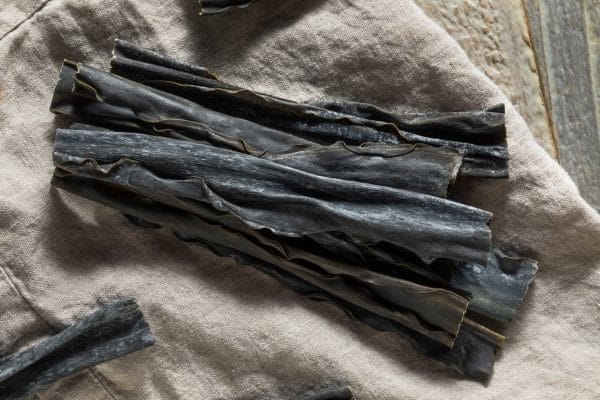
Kombu is a type of edible seaweed. It’s commonly known as Kelp in the United States. It belongs to the family of large brown algae that can grow up to over 20 meters long. The word Kombu comes from the Japanese word for Kelp which is Konbu or Kyogoku. The word Kombu means scallion or onion; therefore, this plant has small yellow flowers that grow on the tips of its branches and leaves. It’s scientific name is Laminaria Japonica.It is also known as sea vegetables and belongs to the Laminaria family. It is found in Japan, the Philippines, Taiwan, Indonesia, and Northern Europe. It grows in shallow waters along the northern coasts of these countries. In Korea, it is sometimes called Kimchi or Kimchigogi (김치고기).
It has a very strong flavor and aroma. It has a fish-like flavor to it. The smell is often described as sea-like, briny, and seashore-like. This vegetable can be eaten in many different ways. When you’re making soup, stock, or broth, you can slice the Kombu into thin strips or small thin squares and add them to the soup to give it its nice sea-like flavor.
Kombu seaweed is used in many different dishes. It can be used with Lo Mein (Chinese noodles), Ramen, Chirashi Sushi, Tempura, and other Japanese or Chinese foods. The same goes for soups such as miso soup and tomato soup, salad dressings, and even some Korean soups such as Sujebi. It can also be used when marinating or using as a glaze for many different types of foods such as fish, shellfish, and chicken.
It is known in Japan to be good for health, and it has a very different taste than any other type of seaweed. It can boost metabolism and help your body digest food more efficiently since it makes the stomach secrete more gastric juices. It is rich in iodine, calcium, and protein. It has a slightly sweet taste to it and a crisp texture to it when raw. It helps with digestion, boosts the immune system, and helps with detoxification in the body. The health benefits of Kombu are numerous. You can find a study on the health benefits of Kombu here. It contains vitamin C, which protects against infections and helps build healthy teeth and bones. It is easy to find in the USA. The price is low, and you can find it in Chinatown, Asian supermarkets, and even regular markets such as Walmart or Kroger.
Kangkong

Kangkong is a very popular vegetable, and it is grown in many Asian countries, such as China, Malaysia, Thailand, Singapore, and Vietnam. Its scientific name is Ipomoea Aquatica. It belongs to the morning glory family of plants, and it’s also known to be water spinach. It has flat, broad leaves that come in at least two different colors, including green and purple. It has an elongated leaf blade with an oblong shape to it. Kangkong has a very nice, sweet taste to it. In some parts of Asia, it is called okras or water spinach in English. It tastes like a cross between water chestnuts and jicama. This vegetable’s flavor is similar to the taste of anise and radish seeds. It’s very popular in rice noodle dishes such as Thai fried rice and can be used in soups, stir fry dishes, curries, and even stir-fry noodles. It has a very distinct and sweet smell to it. The smell is similar in some ways to the smell of water chestnuts. It has a slightly sweet vegetable aroma to it. When you are cooking it, you can use the entire plant, including the leaves, stems, and even roots.
The stems can be chopped up and used in stir-fry dishes or in soups, while the roots can be boiled and then mashed up into a smooth paste of some sort. Just like Kombu, it is also used in dishes such as miso soup, ramen, and spaghetti. You can also use it with other Asian foods. It can be used in stir-fry dishes or in soups and stews. It tastes great when mixed with tofu, seafood, and vegetables such as carrots or zucchini.
The health benefits of this vegetable are still being studied. It has a lot of potassium which helps to regulate the blood sugar levels, and it is also a good source of vitamin K, Thiamine, and niacin. Some studies have shown that eating Kangkong can help prevent kidney stones in women as well as in people who have high blood pressure. It’s also very high in dietary fiber, which helps remove excess cholesterol from the body. You can find a study on the health benefits of Kangkong here.
It can be easily found in most Asian markets. It is also becoming more popular in the USA, and you can find it in Asian supermarkets, regular supermarkets, and even local farmer’s markets.
Kurrat
Kurrat is a popular vegetable. It resembles a leafy green and yellow-green color, and it has the flavor of turnip leaves. It may be eaten raw, cooked, or seasoned and can be used in both savory and sweet dishes. It is also known as a Japanese turnip. It is one of the most popular spring vegetables in Japan, and some people have been using it for hundreds of years to make an herbal medicine called Kurarinkanzo (蔓蘚銀杏). Its scientific name is Brassica rapa. It is a member of the cabbage family of vegetables. It belongs to the Brassicaceae family.
Kurrat’s taste resembles a mild, smooth, and mellow turnip flavor. It has a flavor that is similar to asparagus but with a more delicate and sweet taste. It has a slightly nutty, sweet, and sweet aroma to it. It is also used in many different types of dishes, and it is often cooked with soy sauce to boost its flavor. It can be used with many different types of ingredients, such as tofu, eggs, or meat, such as pork. When adding it to stir-fry noodles, you can use kurrat leaves instead of regular cabbage leaves to add a little bit of a different texture to them. It is used in salad dishes, soups, and some Japanese noodles recipes such as dry udon or yakisoba. It is also extremely high in vitamins A and C. These vitamins are great for the skin, eyes, and immune system. It’s also a good source of some B vitamins, carotene, and fiber.
Studies have shown that eating kurrat can help prevent colon cancer. It is good for the digestive system and helps prevent constipation. It’s also a good source of fiber which helps to lower cholesterol levels and combat the risk of heart disease and stroke. It contains over 30 different nutrients, including potassium and calcium, which helps to prevent kidney stones as well as build strong bones and teeth. You can find a study on the health benefits of Kurrat here. You can easily buy kurrat in most grocery stores in the USA. The price is lower, and the vegetable comes in bundles and is a good size. You don’t even have to buy an entire bundle since kurrat can be easily found in just the leaves section of your grocery store.

